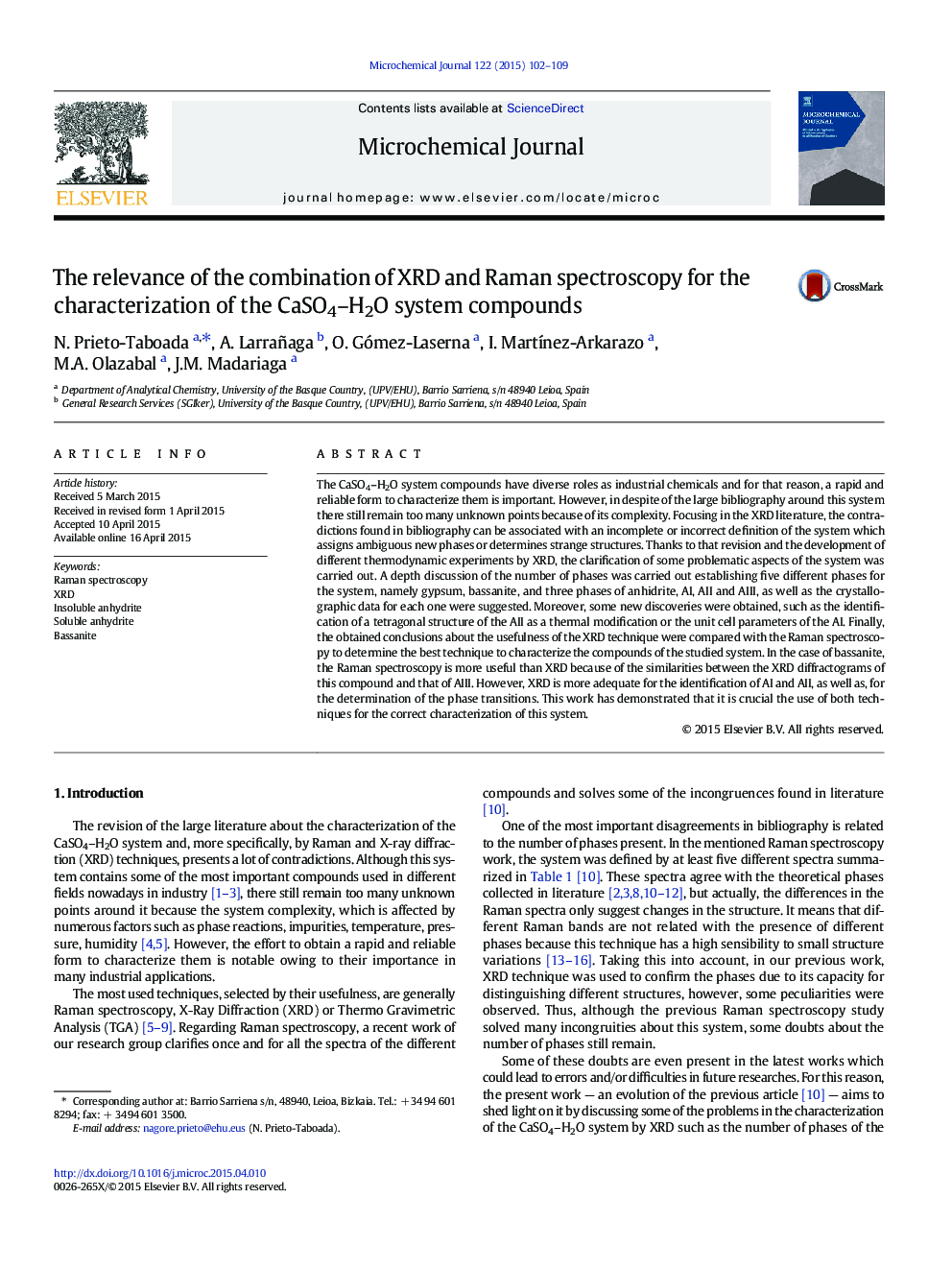| Article ID | Journal | Published Year | Pages | File Type |
|---|---|---|---|---|
| 1227767 | Microchemical Journal | 2015 | 8 Pages |
Abstract
The CaSO4-H2O system compounds have diverse roles as industrial chemicals and for that reason, a rapid and reliable form to characterize them is important. However, in despite of the large bibliography around this system there still remain too many unknown points because of its complexity. Focusing in the XRD literature, the contradictions found in bibliography can be associated with an incomplete or incorrect definition of the system which assigns ambiguous new phases or determines strange structures. Thanks to that revision and the development of different thermodynamic experiments by XRD, the clarification of some problematic aspects of the system was carried out. A depth discussion of the number of phases was carried out establishing five different phases for the system, namely gypsum, bassanite, and three phases of anhidrite, AI, AII and AIII, as well as the crystallographic data for each one were suggested. Moreover, some new discoveries were obtained, such as the identification of a tetragonal structure of the AII as a thermal modification or the unit cell parameters of the AI. Finally, the obtained conclusions about the usefulness of the XRD technique were compared with the Raman spectroscopy to determine the best technique to characterize the compounds of the studied system. In the case of bassanite, the Raman spectroscopy is more useful than XRD because of the similarities between the XRD diffractograms of this compound and that of AIII. However, XRD is more adequate for the identification of AI and AII, as well as, for the determination of the phase transitions. This work has demonstrated that it is crucial the use of both techniques for the correct characterization of this system.
Keywords
Related Topics
Physical Sciences and Engineering
Chemistry
Analytical Chemistry
Authors
N. Prieto-Taboada, A. Larrañaga, O. Gómez-Laserna, I. MartÃnez-Arkarazo, M.A. Olazabal, J.M. Madariaga,
